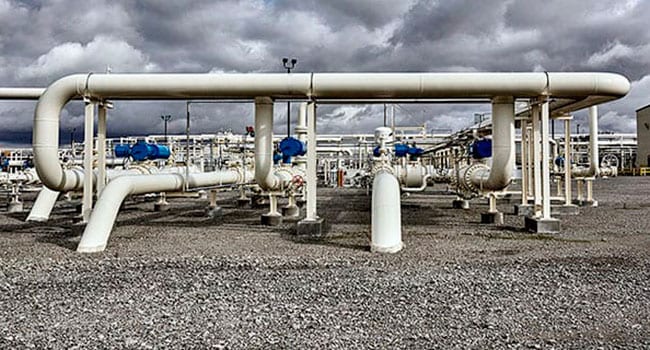Canada will remain a major producer and supplier of energy to the rest of the world and that role will increase as new oil pipelines are built and LNG export capacity comes on stream, says a new report by RBC Economics.
“We expect Canadian oil sands producers, already large investors in clean technology, to continue to invest in measures that will further reduce emissions per barrel,” said the report Navigating the 2020s: How Canada can thrive in a decade of change.
“Doing so will help Canada keep domestic emissions under control (the oil and gas sector accounts for more than one-quarter of Canada’s GHG emissions) and ensure the oil we export is as cleanly produced as our competitors.
“Canada’s natural gas exports can also play a role in reducing emissions intensity abroad. LNG shipments to emerging economies in Asia, where energy demand is growing much faster than in Canada, can help replace coal in electricity production, just as natural gas is doing here in Canada.”
The report said that as climate concerns mount, Canada’s challenge will be to better sell ourselves as a responsible, cleaner energy producer.
“We already compare favourably to other oil-producing countries in Environmental, Social and Governance rankings. Canada’s oil and gas industry invests $1.4 billion a year in clean technologies, according to the Clean Resource Innovation Network, and 12 Canadian companies were among the top 100 companies in the 2019 Global Cleantech 100, an annual ranking of the companies leading in sustainable technology innovation. Ottawa has set out an ambitious target of turning Canada’s leadership in clean technologies into one of Canada’s top-five exporting industries by 2025. Its goal: a cleantech sector that would generate $20 billion in exports midway through the decade, compared with $7.8 billion in 2016.”
The report said the GDP of Canada’s clean energy economy is $62 billion, with the biggest component being renewable and alternative energy supply.
“Investments required to make a shift to a greener future in Canada will be expensive. The good news: global financial markets have signaled growing appetite to finance the transition through green bonds, whose proceeds are used in projects that will mitigate or reduce climate change. Canada’s first green bond, for US$300 million, was issued in early 2014. There are now around US$15 billion in Canadian-issued green bonds outstanding,” said RBC.
“While green bond issuance remains a small fraction of total global bond issuance, it rose to US$150 billion in 2018 from just US$1 billion a decade ago. Certified green bond issuers have achieved favourable terms due to high demand and scarcity of supply. While Canada remains a smaller player than China or France, it has seen its green bond market grow steadily, with public sector issuers leading the way. There’s plenty of opportunity to take the lead on next-generation clean projects, given Canada’s abundance of resources, well-developed financial sector and highly educated population. “
The views, opinions and positions expressed by columnists and contributors are the author’s alone. They do not inherently or expressly reflect the views, opinions and/or positions of our publication.

